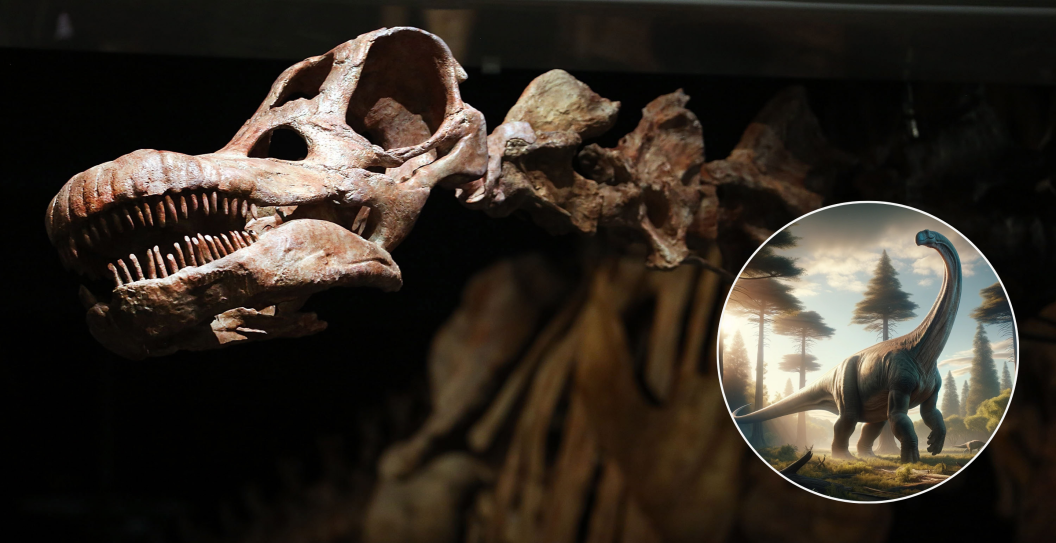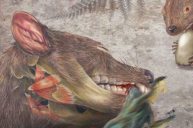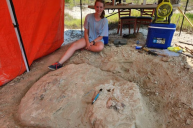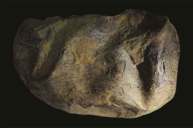While many of us as children dreamed of finding ancient fossils, few of us have probably ever actually done so. And likely none of us have fulfilled that dream to the extent that one man did in France, when he discovered a nearly complete dinosaur skeleton.
Damien Boschetto, now 25, was hiking with his dog two years ago in a forest when he stumbled upon the fossil in Hérault, France near the town of Montouliers. "A landslide on the edge of the cliff exposed the bones of various skeletons," Boschetto told local news outfit FranceBleu, as translated and quoted by Newsweek. Intrigued by paleontology himself, Boschetto realized immediately that he'd found something special, so he reported the fossil discovery to France's Cultural, Archaeological, and Paleontological Association (ACAP) in the nearby town of Cruzy.
Upon examination, the group determined that Boschetto had found a 30-foot-long fossilized Titanosaur. A subgroup of sauropods, titanosaurs lived from the Late Jurassic Epoch to the end of the Cretaceous Period, roughly 165 million to 66 million years ago. They were herbivores with very long necks, similar to the brachiosaurus and argentinosaurus. The sauropod group includes the largest known dinosaurs—and therefore largest land animals—ever to walk the earth, although their sizes varied considerably.
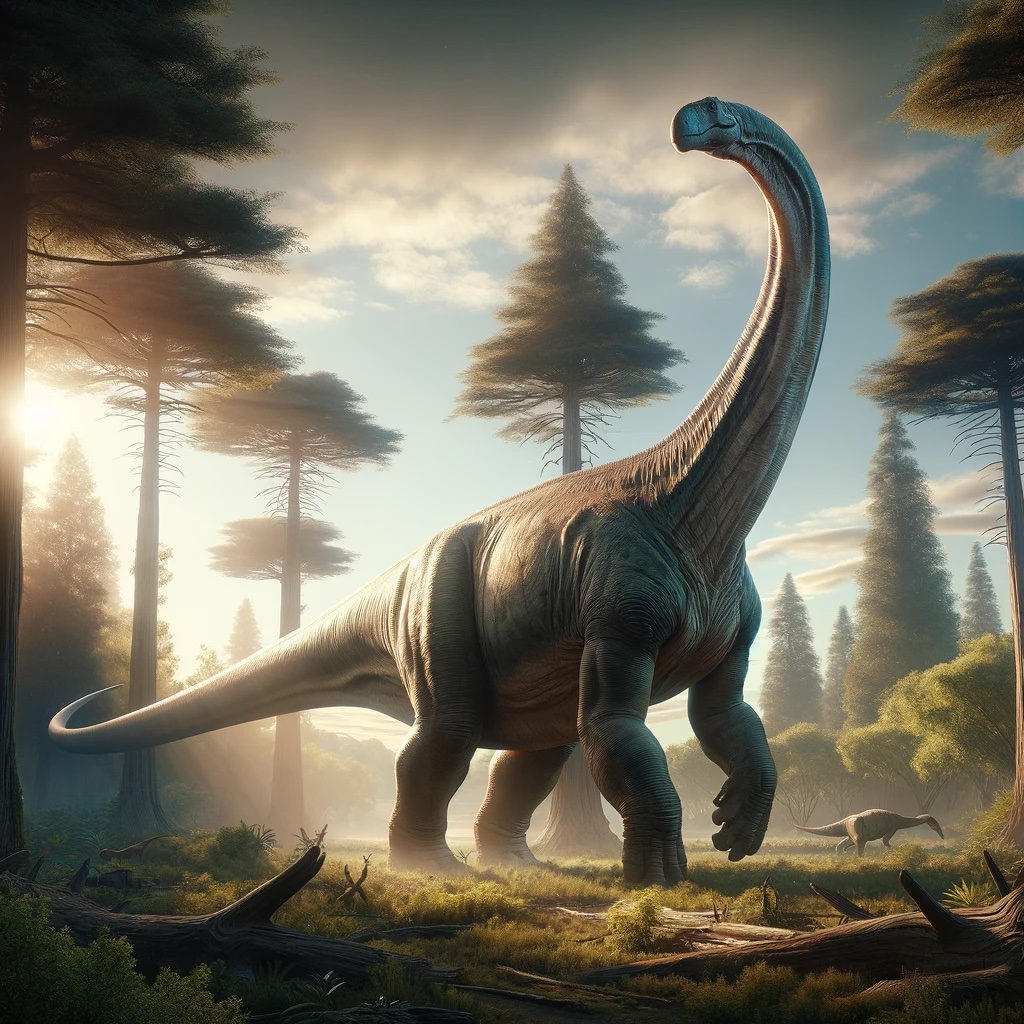
A realistic depiction of what a titanosaur may have looked like. This image was generated with the assistance of AI.
Researchers began excavating the fossil, with the eager Boschetto assisting. The fossilized titanosaur was found to be 70 percent complete; a shocking discovery, as finding such intact fossilized dinosaurs is incredibly rare. Realizing what a treasure they discovered, ACAP and Boschetto kept the fossil a secret for two years to prevent people from coming to the site and stealing or damaging the bones as they were being excavated.
Since the bones' discovery, ACAP volunteers have removed the titanosaur from the ground and taken it to a museum in Cruzy. The museum will study the titanosaur extensively before putting it on display.
"In the commune of Cruzy we have a museum and a deposit/laboratory where all the collections are stored, prepared, inventoried, or exhibited," Boschetto said. "Several parts of these skeletons have already been prepared or are being prepared for two years and already offer a great insight into the scale and quality of these new discoveries."
After the discovery, Boschetto quit his energy-sector job to pursue a master's degree in paleontology.
